You are here
Mountains of Kent - the land of legends.
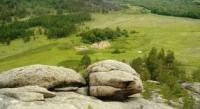
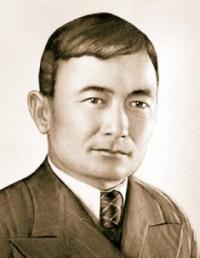
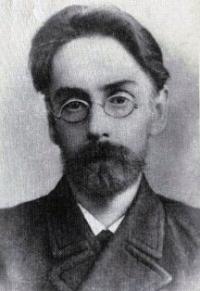
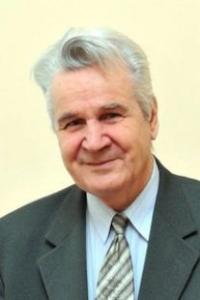
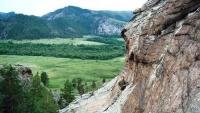
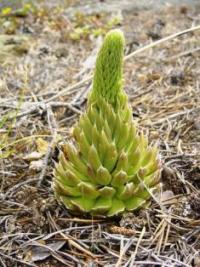
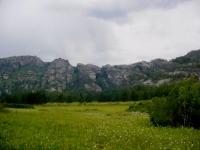
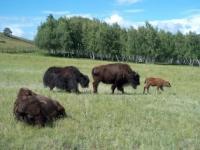
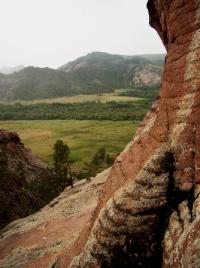
Kent mountains in the Karaganda region.
“The whole vast world is around me, above me and under me is full of unknown secrets. I will open them all my life, because this is the most fascinating activity in the world.
V. Bianchi.
Hiking in the Kent Mountains.
Almost every Karaganda traveled to the mountains of Karkaraly and Karkaraly. But the Karkaraly mountains are only a small part, the northern edge of a huge system of mountains stretching hundreds of kilometers from west to east. It includes the mountains of Kent, Bakty, Koshubay, Burtas, Konyrtemirshi, Kyzyltas and Kazylarai.
Each mountain building has its own unique beauty, its peaks, its small rivers flowing from these mountains to the north and south. Here originate Nura, Sherubay-Nura, Zharly, Taldy, Tokrau. It was a land of frightened game, people came here to hunt argali for hundreds and thousands of kilometers.
This region still remains poorly studied in tourism. Today we will talk about a small area of this mountainous country - the Kent Mountains. The last time I visited the Kent Mountains was in the fall of 2003, while I was in the Shakhtar holiday home of Ispat Karmet OJSC.
It was the beginning of September, but the weather was warm, almost summer. To the right, in the distance, are the dark contours of the mountain ridge; there, at their foot, is the village of miners of Karagayly. And in the distance, like a fairytale mirage, the high ridges of the Kent mountain range appeared.
This is the second largest area after Karkaralinsk, a mountainous forest. It stretched a half-arc for more than three dozen kilometers, and a width of almost two dozen. From the south, Kent mountains look like a mighty, impregnable wall that rose above the steppe.
The granite sides of the rocks sparkle in the sun with their polished rounded sides. And in the north, the mountains are divided into several spurs with wide forest-steppe valleys. The area of the Kent Mountains is about one thousand square kilometers.
We drove through the village of Kasym Amanzholov. The houses are clean, tidy, firewood is being prepared for the winter. We stopped at the monument to the front-line poet who sang this land. Nearby is a new mosque with semicircular towers and a domed top and elegant lanterns.
We were told that there is a good library in the village. In some houses, dishes of antennas are visible. The villagers now have the opportunity to watch many channels, connected with the region, republic and the world. From here, along the steppe path, we approached the mountains, drove into the valley, which is surrounded by cliffs on all sides.
Near the forest with tall trees, birch, pine, aspen, willow thickets. Somewhere here the small river Malaya Talda was lost. In the forest in the lowlands, marshy grassy hummocks, and under them water squishes. There are wonderful mushroom places: traps, birch barks, russula, and the mushrooms amaze with their gigantic size.
The rocks are unusually picturesque and bizarre, which in places rise upright, dotted with cracks and wrinkles. Water and wind sculpted them millions of tons. And now the rocks look at the world with the faces of the holy elders, the faces of birds, animals, dinosaurs, creatures unknown to the world.
The light brown tones of the rocks, combined with the incomprehensible image of green pines growing here make the rocks especially attractive, cause each visitor to have different associations depending on their mood, culture and imagination.
But without a doubt, these are talented, wonderful works by a sculptor named Nature. The highest mountain is of the same name - Kent, its absolute height is 1469 meters. The other peaks of the ridges of Dongal, Nayzatas, Zhamantau, Bosaga are slightly inferior.
They are separated by deep gorges, logs, where the Taldy mountain rivers (Bolshaya and Malaya), Akkiyak, Karaagash, Kazylkent, Kadyr and others flow down. Clean springs with cool, tasty water are often found in the Kent mountains.
Due to natural conditions, beautiful trees and giant trees grow on the northern slope of the Kent Mountains, some of which cannot be reached by hand. And above the bushes of currant grow: red, and black, and stone, there is such, raspberries, cotoneaster.
Botanists in the mountains of Kent found about nine hundred species of flowering plants, of which more than a third are useful, many are medicinal. Wild strawberries grow in forest glades, mountain ash and relic barberry grow in the forest.
Rare wormwood smooth, which has unique medicinal properties, grows here. Every summer archaeologists, geologists, botanists come here and every time they leave with new finds and discoveries. Archaeologists have found here cultural monuments of the Bronze Age, bronze awls, buckles, sickles, the remains of pottery.
Geologists here mined high-quality quartzites, as well as chrysoprase semi-precious stones, botanists - new plants, and doctors discover new properties of endemic plants. In the rich in grasses, feeds of the Kent valleys, nomads lived for many centuries.
The article "About the Kyrgyz nomads", written by Chokan Valikhanov in 1864, notes that the wooded mountains of Kent and Kazulyk (Kazylyk) are used for wintering. In the mountains, the forest you can hide from strong winds. The fauna and flora are diverse here.
Walking in the mountains, each observant person will find traces of the presence of argali - mountain sheep. And if you're lucky, then see them quickly moving away from a person. I, too, once in the mountains of Bakty, adjacent to the mountains of Kent, see argali, frozen on a rock, with his head proudly raised.
Attempts to approach him were unsuccessful. Once again his figure flickered and disappeared. Such meetings remain in the memory for a lifetime. These are truly graceful creatures. If they allowed me to create a coat of arms of the Karaganda region, then I would not have placed a marmot on it, as was suggested in the Industrial Karaganda newspaper, but argali, in which everything is expressed - beauty, pride, dexterity.
This head would remind us that this world is fragile, and a person can indifferently destroy what nature has created for millions of years. Arakharov became very few. They are listed in the Red Book. The new rich got a fashion to decorate their luxurious apartments with stuffed heads of argali.
And it costs a lot of "grandmas." Therefore, argali have become even more wary of people. And on my last trip, before my very eyes, without any fear, a hare ran, at least take pictures. There are foxes, wolves, capercaillie, black grouse, and hazel grouse.
Moose live here. Sometimes they even go on the road. They know that they are not touched here. In 2010, at the foot of Mount Kent in the Karkaraly district, they found the burial of another Kazakhstani “golden man”, containing many values, including gold items.
Burial "Taldy-2" refers to one of the six mounds of the Saka king. As a result of research work, more than 130 large gold items, 14 bow arrows, and stone necklaces were found here. Among the items found there are beautiful figurines of wild cats, gold belts, earrings and other objects depicting wild animals.
This monument dates back to VI - V centuries BC. Studies carried out in Central Kazakhstan established that metal smelting and processing was mastered 300-400 years earlier than in Europe. Such unique finds, as in the barrows of Issyk and Karkaralinsk, allow a different look at the ancient history of Central Kazakhstan.
The Kent Mountains hold many secrets and mysteries. One of them is the Kzyl-Kent Palace, once located in the eastern part of the Kent Mountains in the Kzylkent Gorge, on the banks of the Kzylsu River. The famous oriental scientist A.I. wrote about this palace.
Levshin in his famous work on the Kirghiz Kaisaks. The Kzyl-Kent Palace was mentioned by a XIXth-century explorer G. Bronevsky and many of their followers. Researcher N. Konshin in his Memorial Book of the Semipalatinsk Region in 1901 wrote:
“The palace consisted of a large chamber with 5 fathoms in width and length, small rooms attached to the left and right, and the back one - large. only the front side, about two and a half fathoms high, and columns of four to five arches, the side walls of the building and the walls that separated the large room were half collapsed.
They say that a few years ago there was still a whole log roof. There was probably a garden with a small pond and irrigation ditches." And today there are only traces of this interesting mysterious structure, with which various legends are associated. I know two legends. One is folk.
I heard it from forester Akish Alimov more than thirty years ago. A great legend, but in order to reduce time, I will retell another, earlier one that I read in the library to them. Lenin in Moscow in notes of the Russian Geographical Society for the Department of Ethnography, Volume XXXIV, published in St. Petersburg in 1909.
There was published in the retelling of L.K. Chermak, one of the famous orientalists of Russia, the legend "Kzyl-Kench". He recorded it in 1898 from the words of Kazakh Mukhametchi the tract of the Kent Mountains, a high old man. Muhametchi over a cup of koumiss told its author. Here is a summary of it.
In those ancient times, people lived more freely and richly. Khan Auke grew up a beautiful daughter Nezhde. Khan Contege happened to be at Khan Auke at a funeral of his father. And there he saw the already aging Khan, the beauty of Nezhde, and lost his peace.
The wake ended, Khan Kontezhe returned to his camp, met with his wives and even more inflamed with love for the beautiful Nezhde. The concierge was rich, there were about thirty herds of horses, and each had thousands of heads, and he lost the bill to the sheep, as well as the accumulated good in the forged chests.
Awa went to Auke The matchmakers went to Auka with rich gifts for their father and bride. And Auke would gladly be related to Contege, but the daughter of Kalmyk Nezhde was obstinate, did not want to follow the aging Contege. But she could not resist her father.
Cried, cried, but began to collect the dowry. According to Kalmyk customs, the bride must go to the groom with her dowry, accompanied by forty girls and forty dzhigits. And the daughter’s dowry was rich, because she is a Khan’s daughter.
There were more than fifty camels carrying goods. And Khan Auke sent his two guides, one Kalmyk, and the other - the Kyrgyz. They were going on a long journey, and the road was far away. It has come very much. The old men warned Auke to put off the caravan until spring, and they were right.
Early winter came, two days a blizzard raged, there was so much snow that a crowded caravan and camels fell asleep. And then it rained, and after it frost hit again. This happens in the steppe. In addition, the Kyrgyz and Kalmyk dzhigits began to compete with each other, and the Kyrgyz began to defeat the Kalmyk.
The Khan’s daughter was angry, but when she saw the batyr, the anger passed and fell in love with him. And the beauty Neezhd decided to winter near the Kent mountains, there is a forest, there is a stone, there are also dzhigits.
Nobody dared to disobey the khan’s daughter, they quickly got down to business and built a house, they called Kzyl-Kench. What happened next? The Batyr Kirghiz fell in love with Nezhde and grew heavier from him, returned to Khan Kontezha in the spring.
Next comes a long interesting story about the fate of the son whom Nezhde gave birth to from the Kyrgyz batyr. He turned out to be brave, strong, and deft, but the khan did everything to weaken and neutralize him. That is the legend. Perhaps this legend inspired the Kazakhfilm film studio to shoot the Aisulu film.
And the shooting was done in the mountains of Kent. This film is about love and the tragic fate of a beautiful Kazakh girl. The plot is about this: the beautiful orphan Aisulu decided to marry an imperious, wealthy buy. Aisulu loved another and decided to run with him.
The fugitives were caught. Beloved Aisulu was torn to pieces by the dog of the bai. She was forced to marry him. And after a while she ran away from him with a brave young man. It was in winter. The fugitives froze on the way.
One of the first Europeans to visit the Kzyl-Kent Palace was the doctors of the University of Dorpat, Karl Meyer and Alexander Bunge. That was in 1826. They left the following description: “Three versts from the Taldy River is the entrance to a romantic gorge with the remains of a building whose builders are unknown, but most likely it was the jungars.
The walls are still completely preserved. They consist of separate flat granite slabs. The base of the building is a square with a side of 10 meters. Rooms are attached to three sides, and a canopy is built over the main entrance on the fourth side. The building is two-story, once had a roof.
But where the entrance to the second floor was, it is not clear. The purpose of this building is not clear. Kazakhs revere it as a holy place, bring it los pieces, horse hair. They are fixed on a pole placed over the canopy..."
This was perhaps the only residential building on the vast expanses of Sary-Arka. And he was attracted increased attention. What is this? Residential building, as narrated by a legend or religious building. In subsequent years, the Kzyl-Kent Palace was visited more than once by travelers, geographers, and historians of local lore.
Some claimed that it was a pagan temple in which the hermit lived. Others that it was a Kalmyk temple. The mountains of Kent were also visited by writer Mikhail Prishvin, who was interested in the ruins of the legendary Kyzyl-Kensh Palace.
Semipalatinsk local historian B.G. Gerasimov, who visited the Kzyl-Kent Palace, noted that locals in the ruins of the palace found cone-shaped crafts from white clay. Inside them were grains of wheat. One of these items B.G. Gerasimov acquired and transferred to the Semipalatinsk Museum.
At the beginning of the twentieth century, many researchers were inclined to the consensus that it was a Buddhist temple, built in the 17th century or earlier. The researcher of the history of ancient Kazakhstan M. Chekaninsky in his article "The Ruins of Kzyl-Kensh" published in "Notes of the Semipalatinsk branch of the Society for the Study of Kazakhstan" (1929) notes:
"The secluded nature of the area, the plan of the building and the findings, allow us to look at Kzyl-Kensh as to a Buddhist temple, similar to the Erhe Tsarji Buddhist temple, consecrated by Lama Zaya Pandit and ruined, believed to be between 1660 - 1670 during the feuds of Kalmyks, built in 1646 in the area of the Old Semipalatinsk Fortress."
Director and founder of the Karaganda Regional Museum L.F. Semenov has repeatedly been at the site of the ruins of the Kzyl-Kent Palace. In an article entitled “The Story of a Monument” published in the Industrial Karaganda newspaper, he claims that “Kzyl-Konsh is not a Khan’s palace, but a Buddhist temple, forcibly or voluntarily abandoned by its inhabitants and subsequently looted and partially destroyed by new aliens.”
In 1966, together with the local historian Yuri Popov, I had a chance to meet with the oldest resident of Karkaralinsk, a great connoisseur of the history of this region, Yakov Petrovich Bernatsky. He has been living in Karkaralinsk since 1909. He visited the Kent Mountains more than once, carefully examined the Kzyl-Kent Palace.
He still found the second floor of this building unassembled. The old-timers of these places told him that they remember the wooden floors of the temple roof. Today, independent Kazakhstan, located in the heart of the vast Eurasian continent, personifies the unity of all faiths and world religions of the world. In this regard, the creation of the first Buddhist temple in Central Kazakhstan is of great interest.
Kzyl-Kench, Kzyl-Kensh, Kzyl-Kent...over the past centuries, the name has changed. And it is understandable that the geographical name of Mount Kent is inevitably associated with the name of the mysterious palace and has Kalmyk roots.
Of course, today the traces of the former palace, the foundation overgrown with grass are unlikely to cause any aesthetic emotions and associations, but the beautiful legends of love associated with the palace live among the people. And the beautiful nature of the Kent mountain-forest oasis leaves no one indifferent.
It is no coincidence that a wonderful poet Kasym Amanzholov was born here, in the winter of Kzyl. Kasym's father Rakhimzhan died when the boy was five years old. Aigans mother was beautiful, and shortly after her husband's death, she was kidnapped and sold to an old bai. And Kasym remained with his sister.
As a child, Kasim cut out flutes from branches and skillfully played them, and in subsequent years he learned to play independently on dombra, and then mandala, violin, and accordion. Kasym Amanzholov has a poem "Tulip", there are such lines:
Amid the ruins - fresh and scarlet
Is it from blood or fire?
Maybe it marks the beginning
New life, new day?
I got the impression that he wrote these lines about himself. He was born somewhere very close to the ruins of the legendary palace, as a symbol of "a new day, a new life." He closely links his fate to the poet with his native land.
"Native land, the golden cradle!
When my soul didn’t sing like a pipe
When a stone I lay in your sand
Would I be silent? Silent uzhel?
Let's hope that the beautiful land of Kent will give birth to more than one poet who in his work will be able to clearly express his infinite love for her. Today, the Kent Mountain Forest is part of the State Karkaraly Mountain and Forest Reserve, and is protected by law.
At the same time, it is necessary that the mountains of Kent were not closed to tourists so that they continued to give their positive energy to people. And every tourist should take care of nature, the forest, not to make bonfires, fires.
Visit the mountains of Kent and you will be fascinated by them forever.
Authority:
Novikov Vladimir Yakovlevich. http://novikovv.ru/o-karkaralinske/gori-kent-kray-legend
Photos
Alexander Petrov.







